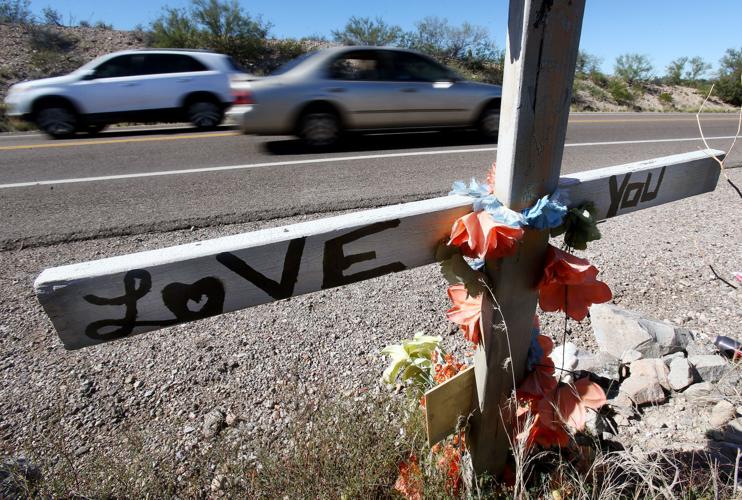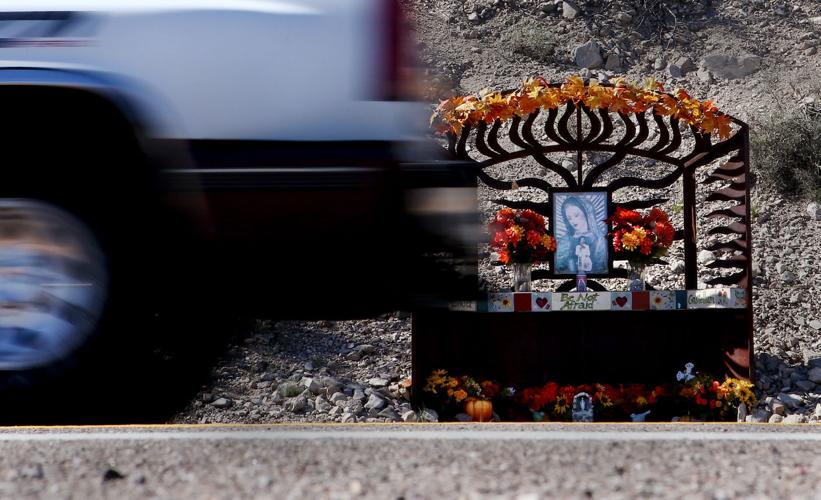This is the time of year when many of our fellow Tucsonans take to downtown streets for the Dia de los Muertos parade in honor of the loved ones they have lost.
The local event grew out of the Catholic All Souls’ Day traditions in Central America, which themselves have roots in much earlier, pre-Columbian traditions of memorializing departed family members.
We have another tradition in Tucson, and undoubtedly other parts of the county, of remembering those among us who have died in on our busy streets and roads.
You see these remembrances all over the metro area as you drive, bike or walk around — small, semi-permanent roadside memorials.
Some are simple bouquets of flowers, others are replete with candles and crosses, and some with stone shrines offered as a reminder that someone who was loved is now gone.
A reader recently asked Road Runner about these roadside displays, specifically, are they allowed, do you need a permit and who has to care for them?
The concern was that some memorials have fallen into disrepair after years in the extreme Southern Arizona elements.
The city of Tucson has a policy on the placement of roadside memorials, and likes to be as sensitive and understanding as possible.
“People need to have the opportunity to grieve,” city transportation department spokesman Michael Graham said.
The city’s policy says the memorials can be placed in the public right of way as long as they don’t pose safety hazards or block anyone’s view of the road.
It also says the memorials should be “well maintained.”
That’s a bit subjective, I suppose, and the city hasn’t exactly made a practice of pulling down the memorials or telling residents to clean them up.
In fact, since no one needs a permit to place a roadside memorial, finding the people who placed them isn’t always possible.
There are some exceptions, however.
Graham said he recently tracked down some folks who had placed a memorial on the southeast side.
The city was doing road construction, and the memorial was in the way, he said. After looking at the site, Graham found the name of the victim on the memorial and was able to locate the family through Mothers Against Drunk Driving.
He told the family of the construction plans and asked if they would collect the memorial so the work could proceed. They agreed and came to gather the items.
Pima County also tries to be as cooperative as possible when it comes to roadside memorials, county transportation Director Priscilla Cornelio said.
Unlike the city, however, Pima County doesn’t have an enumerated policy. Instead, Cornelio said, the county just makes sure the memorials don’t cause a road hazard or block anyone’s views.
Also unlike Tucson, Cornelio said most of the memorials in the unincorporated areas stand on private property and not in the public rights of way.
No matter where these memorials appear or what form they take, they stand as solemn reminders of the dangers we all face on our streets.
Down the road
On Monday, that’s today, southbound travel on La Cañada Drive near Lambert Lane will be restricted to one lane while street crews work on the Lambert Lane widening project.
Work hours are approximately 9 a.m. to 2 p.m.
Reader question
Recently, some folks have asked about the beautification process ongoing along Campbell Avenue between Grant Road and Glenn Street.
Readers might recall the city scored a federal grant to pay for part of the project, which includes adding sidewalks, improving intersections and installing median islands.
At least one reader wants to know what kinds of vegetation the city plans to plant in those median islands.
TDOT officials gave Road Runner the following list of plants they plan to use: bottle trees, red yucca and yellow and purple lantana.





